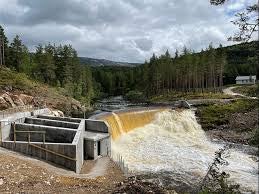The present study makes an effort to explain the crest failure of earthen dams during seismic excitations. Free vibration analysis using three-dimensional modelling of earthen dams is carried out. For combining the contributions of all the possible lateral modes, the complete quadratic combination (CQC) method has also been adopted. The frequencies, mode shapes, and results of the CQC analysis obtained by using three-dimensional modelling, are presented. The tendency of lateral extension at the crest in the first few modes clearly explains the reasons for the occurrence of longitudinally propagating vertical cracks in earthen dams, which were also observed during an earthquake in Gujarat, India in 2001. This study also shows that modifications in the sectional configurations and material properties do not alter the dynamic characteristics favorably or appreciably.
Though it has been found elsewhere that the placement of reinforcement in vertical layers is not at all effective in addressing the problem, the horizontal layers of specially configured reinforcements are found to be considerably effective for the purpose. The conclusions are broadly corroborated through the observations from a simplistic small scale experimental study using a table shaker together with harmonic motion.






